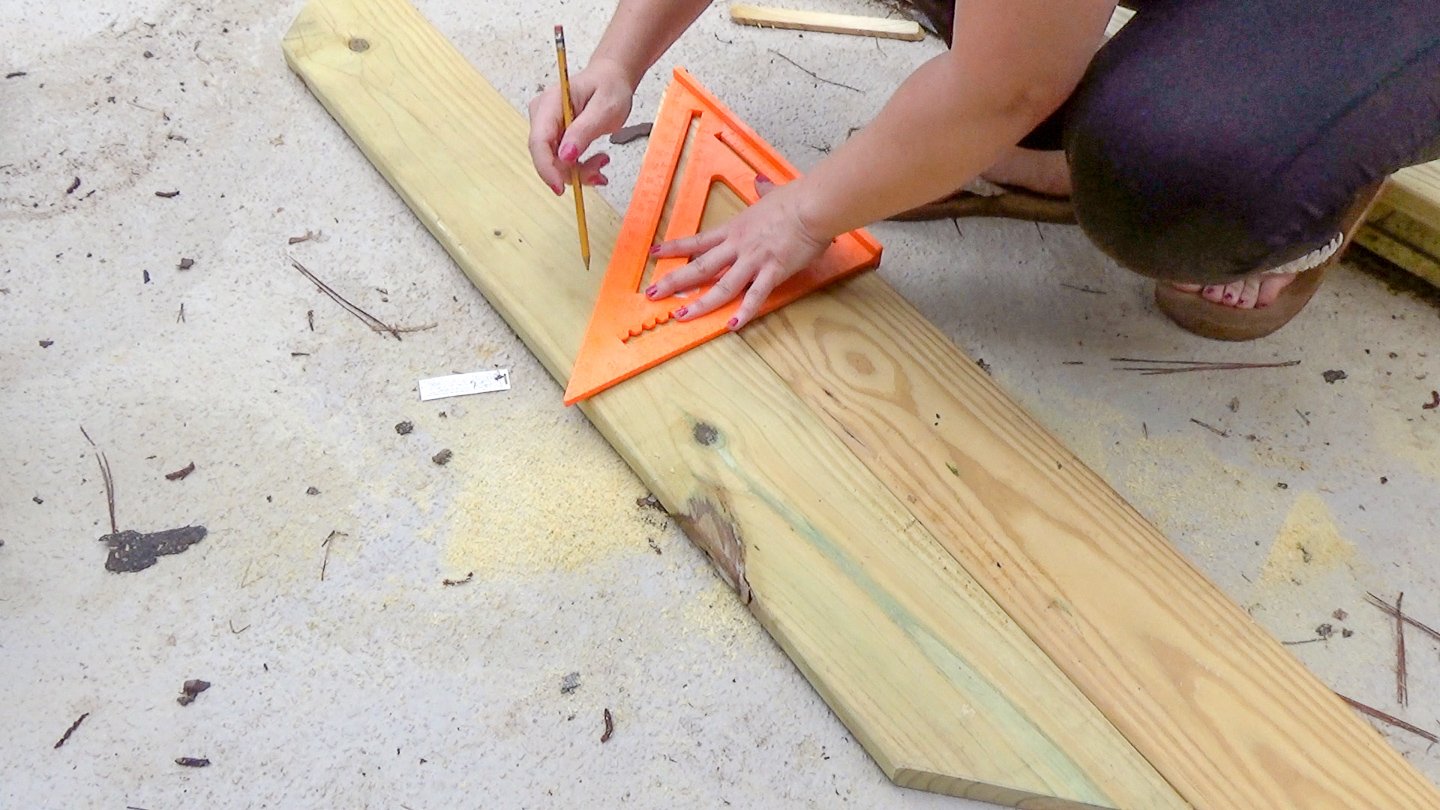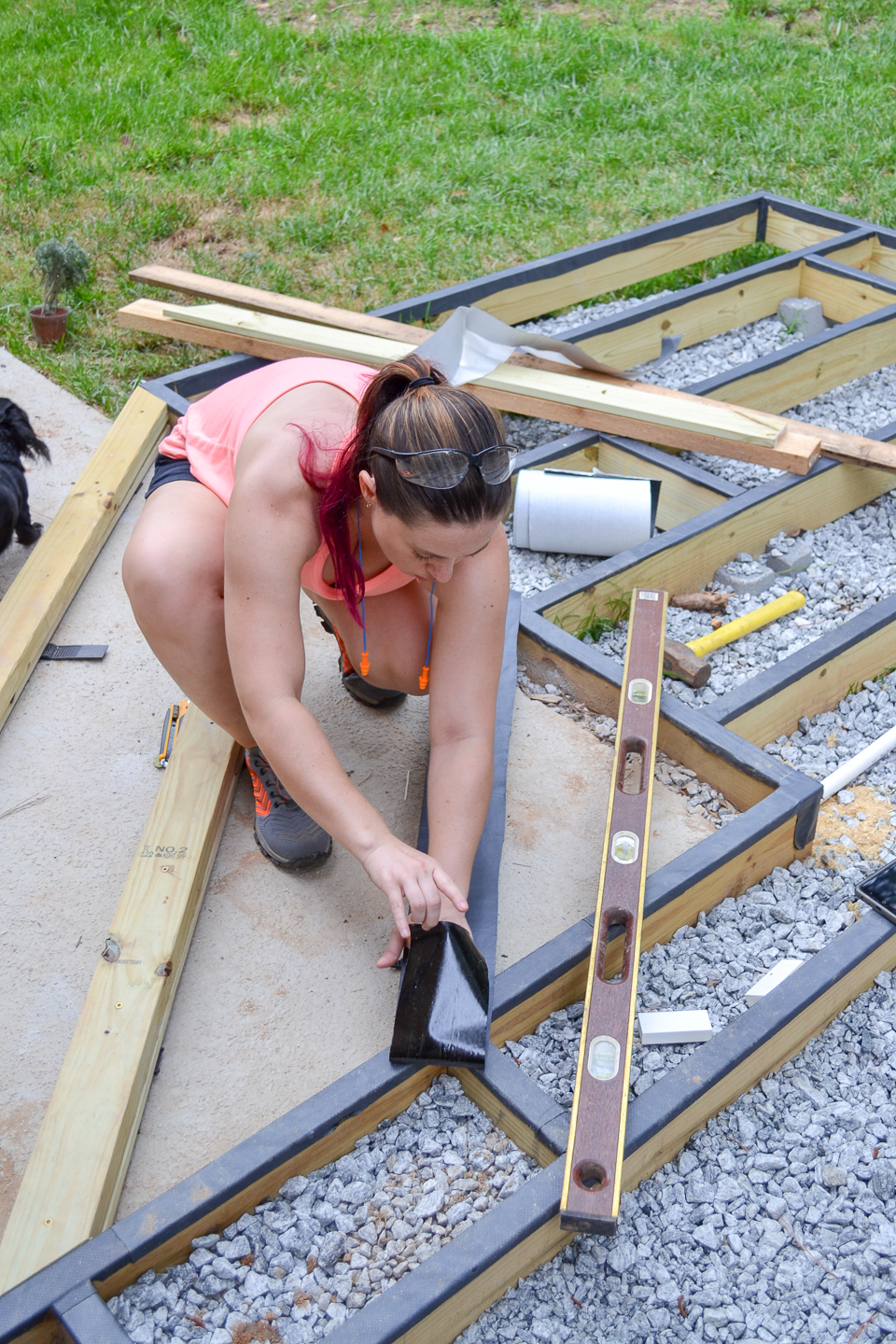Sigh… owning a house is great and all, but when there’s a leak in your ceiling? Ugh. Here’s how to prevent and clear a clogged air conditioning drain line.
Going to tell you right now: this story isn’t quite finished yet. I found a temporary solution, but I’m more or less going ahead and posting this so that someone will run up to their attic and immediately take care of this, before you have to deal with a ceiling leak.
Let’s start with what we all know is never a good sign: the dreaded ceiling stain:

I knew it couldn’t be good. I’ll be partnering with a drywall brand later this fall, and while I was at their headquarters earlier this month (recap coming next week), I heard a quote that proved to be way too ominous:
When it comes to owning a house, it’s not a matter of IF you’ll have a moisture issue. It’s WHEN.
Little did I know how true that was about to be. I’ve always said that my house has a sass all its own, and once again, she interrupted my plans. It was as though my house overheard that quote and manifested an example so I could have a story ready to go. I didn’t want to do a tutorial on ceiling stains, but my house is like, “Drywall? Ok, I got you, boo. Check this out!”
But this, of course, isn’t the project I wanted to do this fall — it’s something else that’s way more exciting and cool.
Frig friggity frig-frig — freaking dammit.
Anyway, I saw the leak and at first thought it might be a sweating/condensation issue. It’s been raining practically EVERY DAY this summer and humid beyond belief. So, I figured that turning the A/C up when we went to visit K’s parents the other weekend might have created a problem, similar to how I learned that leaving the door open might freeze up my A/C (as it turns out, your childhood scolding wasn’t just a “bought air” issue). Working on the deck and shed, I’ve certainly noticed how soggy everything in general has been this summer.
Not to panic, I thought. I‘ll just monitor it and let it dry out. If it did, I could just cover over the stain and be done with it and have learned a lesson. I also had one of K’s brother’s visiting overnight at the time, so I was in a frenzy and really couldn’t spend time thinking on it.
(Which is obviously stupid, because ceiling leaks don’t give a damn about your schedule.)
The next day, it started to drip. And I knew immediately it was a bigger problem. So, I grabbed a tarp and a cardboard box and started cutting the ceiling open. I certainly know enough to handle a drywall patch, so it was more of trying to protect ruining the floor more than anything.

To humor myself, I put a neglected plant underneath the drip to give the plant a little water.  Lemons —-> lemonade.
Lemons —-> lemonade.

After K and I investigated the drip a little more, we had to keep cutting a hole to find the source. I suspected that the leak might be further away, since the stain was forming right along a drywall seam (which would make it a path-of-least-resistance type thing, where water would seep through a vulnerable spot, even if the drip behind it originates somewhere else). The leak was coming from inside the house a spot closer to the actual wall/joists, near a duct.

It occurred to both of us: if you go straight up from this point, it’s between two walls and directly in line with the air conditioner in the attic. DAMMIT. The more I cut, the more it became a steady flow.

Tip: If the drip is splashing on your floor, drape a towel over the bucket.
After looking through a number of articles online, YouTube videos, speaking to my dad, and more, it seemed the most likely culprit was a clogged AC condensation line.
How to Prevent a Clog in Your Air Conditioner’s Condensate Drain Line
The purpose of an air conditioner’s condensate drain line is kind of in the name: to drain excess water. As the HVAC system does its thing, water is produced, and it needs a drip line to take that water from the HVAC system in the attic or basement and outside the home (you know, where it won’t leak through your ceiling). You can often locate the end of this drip line outside, near your A/C unit.
There’s also often an overflow line and a drip pan underneath the indoor HVAC system, so that in the case that the line gets clogged, it will fill the pan and reach the overflow line and still run out of the house. So, why did I still have this issue?

Unfortunately, this whole setup usually doesn’t get much love until there’s damage. Clogs and blockages form from algae and mold buildup. Metal drip pans can rust through. To prevent this buildup, it’s recommended to use distilled vinegar or bleach and pour it into the line at an access point (there’s usually a valve somewhere along the drain line where you can open it and pour it in). Doing so on a regular basis (a good time is every spring just before turning on the A/C for the first time), you should have no problem. If you ever hear a gurgling, or bubbling sound behind your wall, this would be a good time to check too.
But get this: even if you hire someone to regularly service your HVAC system each year, this is commonly forgotten to be checked on. So first, you have to know about this to even ask the person if they checked it. Anyone see the problem with that???
How to Clear a Clogged Air Conditioning Drain Line
You Might Need
- shop vac
- towel and bucket
- duct tape
- distilled vinegar , bleach, or drain line buildup remover
- funnel or something with a narrow pouring spout
- drain snake or a drain line gun
Steps
- Turn off the A/C power at the thermostat and the breaker.
- Locate the drip pan beneath the HVAC system. If it’s got standing water in it, you probably have a clog. Shop vac it out or use a towel to soak up the water. I sincerely doubt you will, but you should also clean the pan with soap while you’re at it.
- Go outside and locate the end of the drain opening. Use the shop vac again for a minute or two (put your hand around the valve and end of the shop vac if you want to improve suction, or use some super cheap dollar-store duct tape that never sticks well to anything when you want it to). You might hear debris getting sucked up, but check the shop vac’s contents if you’re not sure. You might also see some really gross sludge fall out of the line.
- Locate the access valve (if there is one). It will look like a T-shaped vent with a PVC cover. Using a funnel, small cup with a spout, or similar (I used a watering can with a really narrow mouth), pour a little distilled vinegar or bleach into the line.
- Allow it to sit for a little while (go watch an episode on Netflix & come back), then flush with water. Have someone outside on the phone with you when you do this to confirm if the line is now clear.
- If the above doesn’t work, you can try snaking the clog, blasting it with a canister of air (my dad does this), or calling a pro (hopefully a guy who will remember to check this for you the next time he services your system).

In my case, not only was my line clogged, but:

- My drip pan was rusted through in one spot. That’s what was causing it to leak in the house, because water wasn’t catching where it should have been.
- Even if I had known about this prior, my drain line setup had no valve to pour anything into. While this might still work if you can remove the fitting on the edge of the drain pan, mine was stuck on tight and really awkward to move in its current layout. So, we had to cut the line and reroute the water flow temporarily into the overflow drain line.
- Drain lines are recommended to be slightly titled at a downward angle to better assist with water flow. Guess what — nope.
- There are a number of turns in mine, so the clog has been building up slowly for years.
What’s next:
As I mentioned, my tale is not quite over yet, but at least we have the A/C running and I’m confident we’ll be able to get this fixed. We’ll need to clear the clog and reroute the drain line back to normal, add an access valve, and replace the drip pan. We’ll probably also look into installing an overflow sensor in the overflow line, so we can be alerted in case it happens again (yay, technology!).
Oh yeah — and patch the hole in the living room ceiling. I’ll have that tutorial for you sometime in the future.
So, now you know! I hope this info someday helps someone prevent a clog and an expensive repair bill. If it does, please come back here and tell me so I know I prevented damage in the process of earning mine. 

The post Just When I Thought I Had Things Under Control… appeared first on Ugly Duckling House.


 !
!































 ), so you’ll see those next!
), so you’ll see those next!